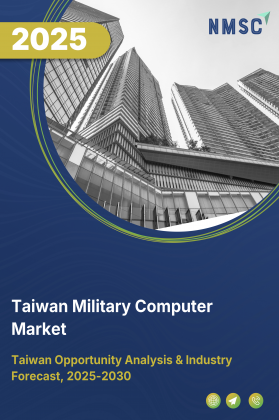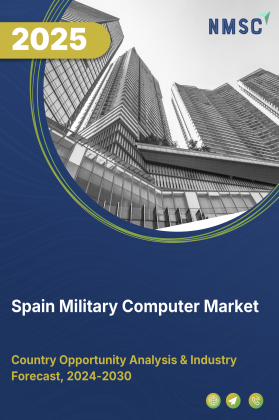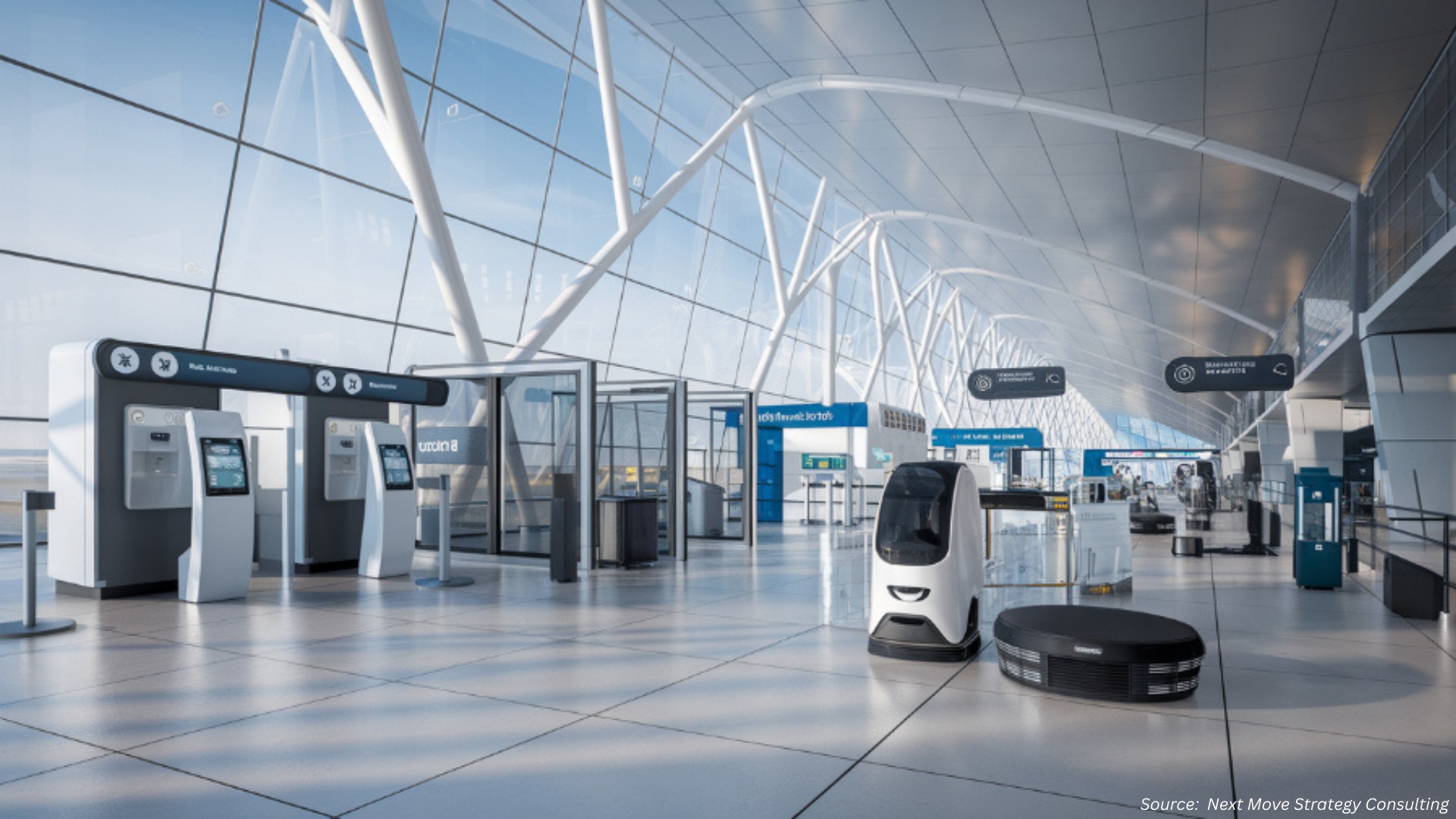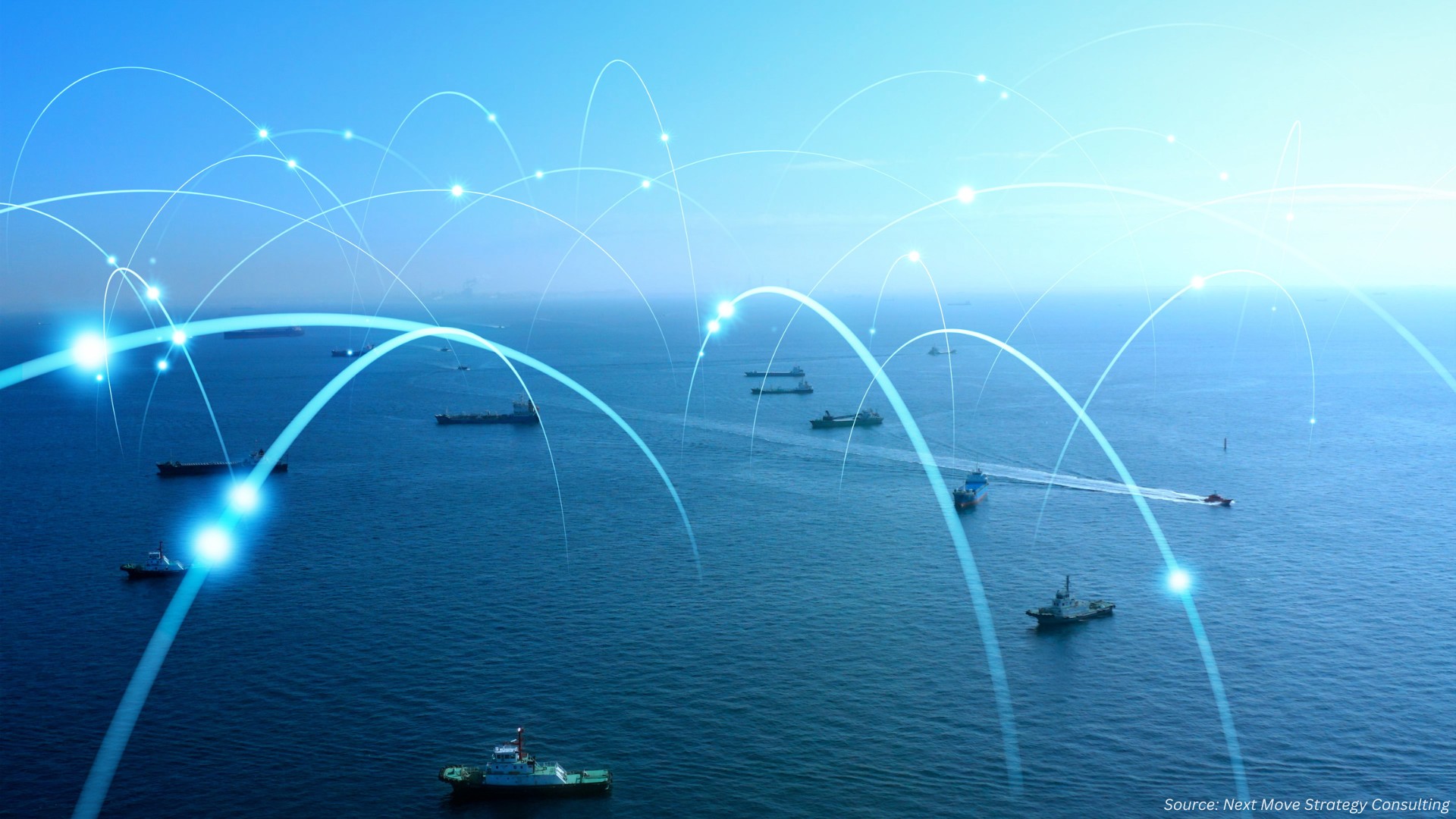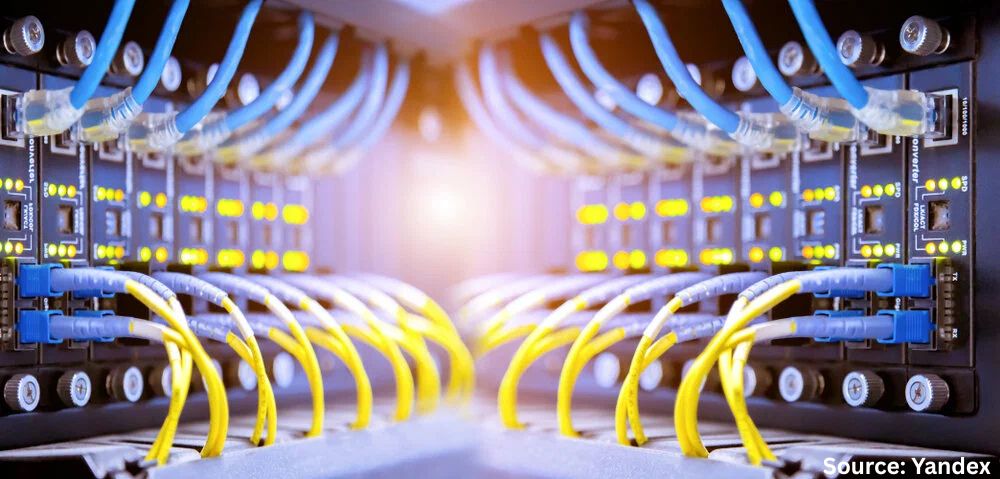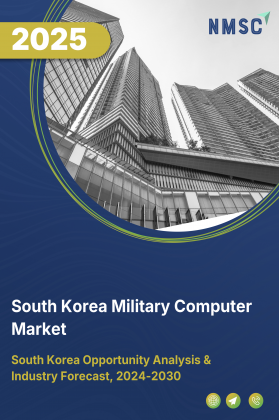
South Korea Military Computer Market by Component (Hardware, Software, and Service), by Product (Rugged Computer, Embedded Computer, and Wearable Computer), by Application (Command and Control Systems, Communication Systems, Combat and Tactical Operations, Intelligence, Surveillance, and Reconnaissance (ISR) Systems, and Others), and by End-User (Army, Navy, and Air Force) – Opportunity Analysis and Industry Forecast, 2025–2030
Industry: Aerospace & Defense | Publish Date: 05-Nov-2025 | No of Pages: 155 | No. of Tables: 117 | No. of Figures: 62 | Format: PDF | Report Code : AD3656
Industry Outlook
The South Korea Military Computer Market size was valued at USD 319.0 million in 2024, and is projected to grow to USD 362.65 million by 2025. Additionally, the industry is expected to continue its growth trajectory, reaching USD 583.3 million by 2030, at a CAGR of 10% from 2025 to 2030.
The factors such as export of defense technology and rise in defense expenditure drive market growth. However, delay in supply of components poses significant challenges to market expansion. On the contrary, the implementation of AI and ML technologies offers promising future opportunities to enhance operational efficiency and decision-making capabilities. Moreover, the top players such as Northrop Grumman Corporation and Intel Corporation are taking various initiatives in order to enhance their market position and expand their product offerings. These initiatives are expected to drive innovation and adoption in the military computer market, improving the overall effectiveness and readiness of defense forces. With advancements in AI and ML, companies are focusing on developing reliable communication and autonomous systems, offering enhanced security, privacy, and user control. As the market matures, the increasing demand for enhanced operational efficiency and decision-making capabilities is expected to fuel further growth.
Export of Defense Technology Driving the South Korea Military Computer Market Growth
The export of defense technology in the country drives the growth of the military computer market due to the increasing demand for advanced systems to support critical defense operations. As countries strengthen their military capabilities, they invest more in innovative technologies for the need for high-performance military computing solutions. South Korea turned up to became one of the top 10 arms exporters in the world by exporting defense technology to 12 countries in 2023. This expansion in defense technology exports accelerates the adoption of advanced military computing systems that enhances operational efficiency and bolstering defense capabilities across multiple regions, in turn boosting market growth.
Rise in Defense Expenditure in South Korea Driving Market Expansion
Increasing defense investments in South Korea are driving the adoption of advanced computing systems designed to enhance operational efficiency and mission readiness. These systems provide critical support for real-time data processing, communication, and strategic planning, enabling the military to maintain superior situational awareness, respond swiftly to emerging threats, and optimize resource deployment. South Korea’s focus on modernizing its defense capabilities and integrating cutting-edge technology is fueling demand for high-performance military computers, thereby contributing to the expansion of the market.
Delay in Supply of Components Restrains the South Korea Military Computer Market Expansion
Delays and shortages in the supply of critical components hinder the timely procurement of military computer systems. The inability to deploy advanced systems on schedule limits the military's capability to respond swiftly to emerging threats, affecting strategic decision-making and operational effectiveness. Also, prolonged timelines also impact training and adaptation processes, delaying the full utilization of new technologies within defense forces. These supply chain disruptions result in increased costs and longer project timelines, thereby limiting the efficient deployment of these technologies hindering market growth.
Integration of Artificial Intelligence and Machine Learning Technology Creates Future Market Opportunities
The integration of advanced technologies, such as artificial intelligence (AI) and machine learning (ML) creates possibility for military computer market growth. Military forces all over the region seeks to improve their capabilities to stay ahead of adversaries. These technologies allow military computers to analyze vast amount of data from various sources to provide actionable insights that improve situation awareness and tactical planning.
Also, these advanced technologies enable continuous learning from past operations and evolving threats, improving the performance of military computers. As defense budgets continue to rise and the need for advanced technologies increases, the integration of AI and ML in military computers is expected to drive significant growth in the market.
Competitive Landscape
Several key players operating in the South Korea military computer industry are Microchip Technology Inc., Northrop Grumman Corporation, Intel Corporation, ADLINK Technology Inc., Barco NV, Dell Technologies, Qualcomm Technologies, Inc., Rambus, Thales Group, Panasonic Holdings Corporation, L3Harris Technologies, Inc., NVIDIA Corporation, MPL AG, Palantir Technologies Inc., IBM Corporation and others.
South Korea Military Computer Market Key Segments
By Component
-
Hardware
-
Processors
-
Input/Output Devices
-
Others
-
-
Software
-
Operating Systems
-
Application Software
-
-
Service
By Product
-
Rugged Computer
-
Rugged Laptops
-
Rugged Tablets
-
Rugged Displays
-
Rugged Handhelds
-
-
Embedded Computers
-
Wearable Computers
By Application
-
Command and Control Systems
-
Communication Systems
-
Combat and Tactical Operations
-
Intelligence, Surveillance, and Reconnaissance (ISR) Systems
-
Others
By End User
-
Army
-
Navy
-
Air Force
Key Players
-
Microchip Technology Inc.
-
Northrop Grumman Corporation
-
ADLINK Technology Inc.
-
Barco NV
-
Dell Technologies
-
Qualcomm Technologies, Inc.
-
Rambus
-
Thales Group
-
Panasonic Holdings Corporation
-
L3Harris Technologies, Inc.
-
MPL AG
-
Palantir Technologies Inc.
-
IBM Corporation
Report Scope And Segmentation
|
Parameters |
Details |
|
Market Size in 2025 |
USD 362.65 Million |
|
Revenue Forecast in 2030 |
USD 583.3 Million |
|
Growth Rate |
CAGR of 10.0% from 2025 to 2030 |
|
Analysis Period |
2024–2030 |
|
Base Year Considered |
2024 |
|
Forecast Period |
2025–2030 |
|
Market Size Estimation |
Million (USD) |
|
Growth Factors |
|
|
Companies Profiled |
15 |
|
Market Share |
Available for 10 companies |
|
Customization Scope |
Free customization (equivalent up to 80 working hours of analysts) after purchase. Addition or alteration to country, regional, and segment scope. |
|
Pricing and Purchase Options |
Avail customized purchase options to meet your exact research needs. |

















 Speak to Our Analyst
Speak to Our Analyst



